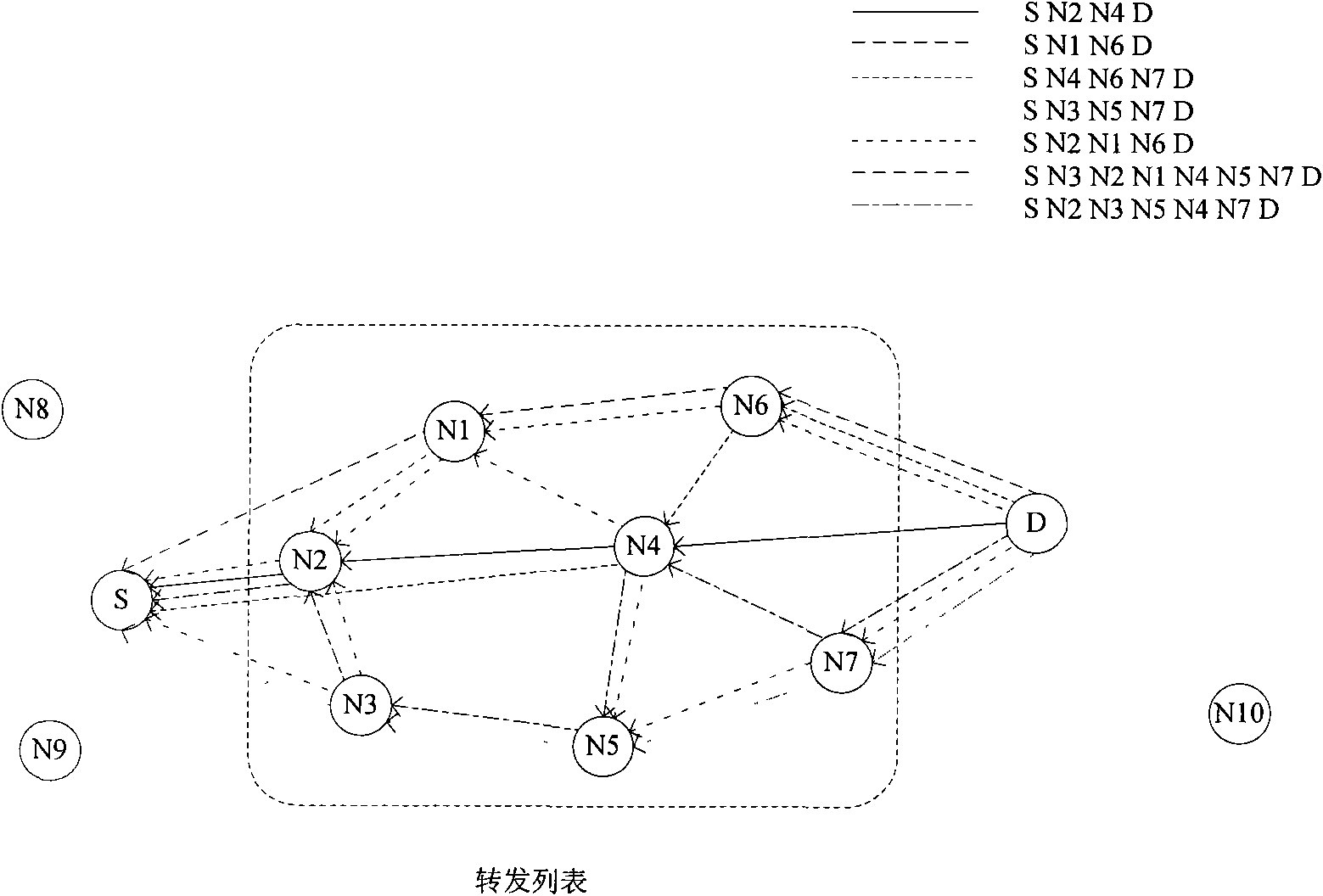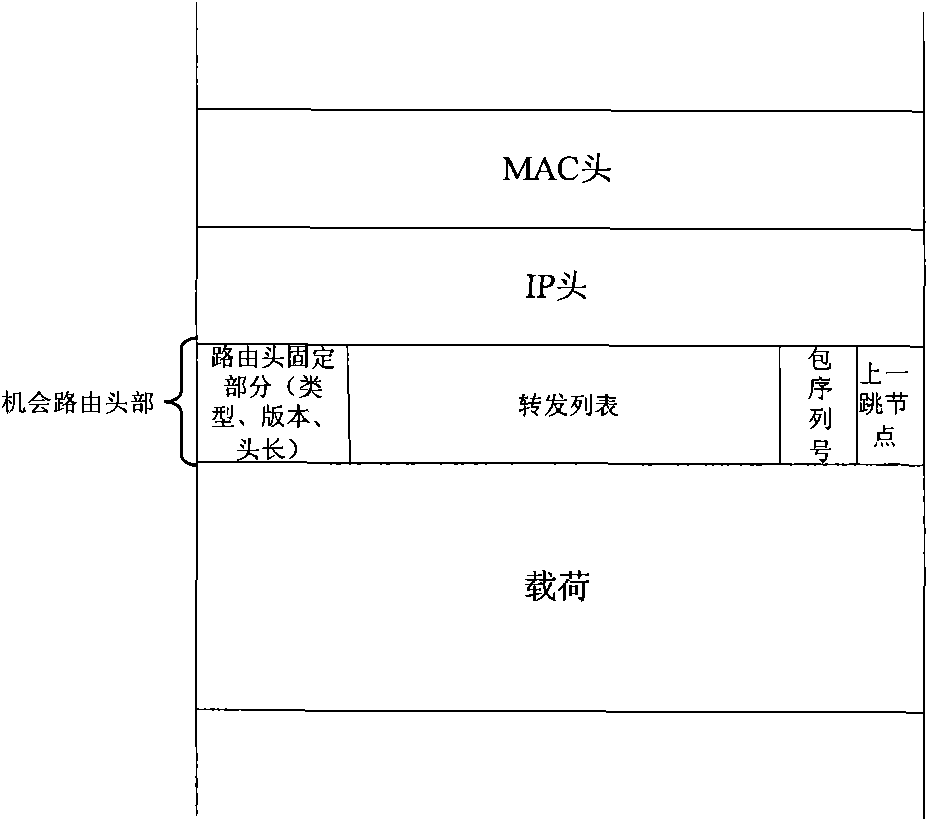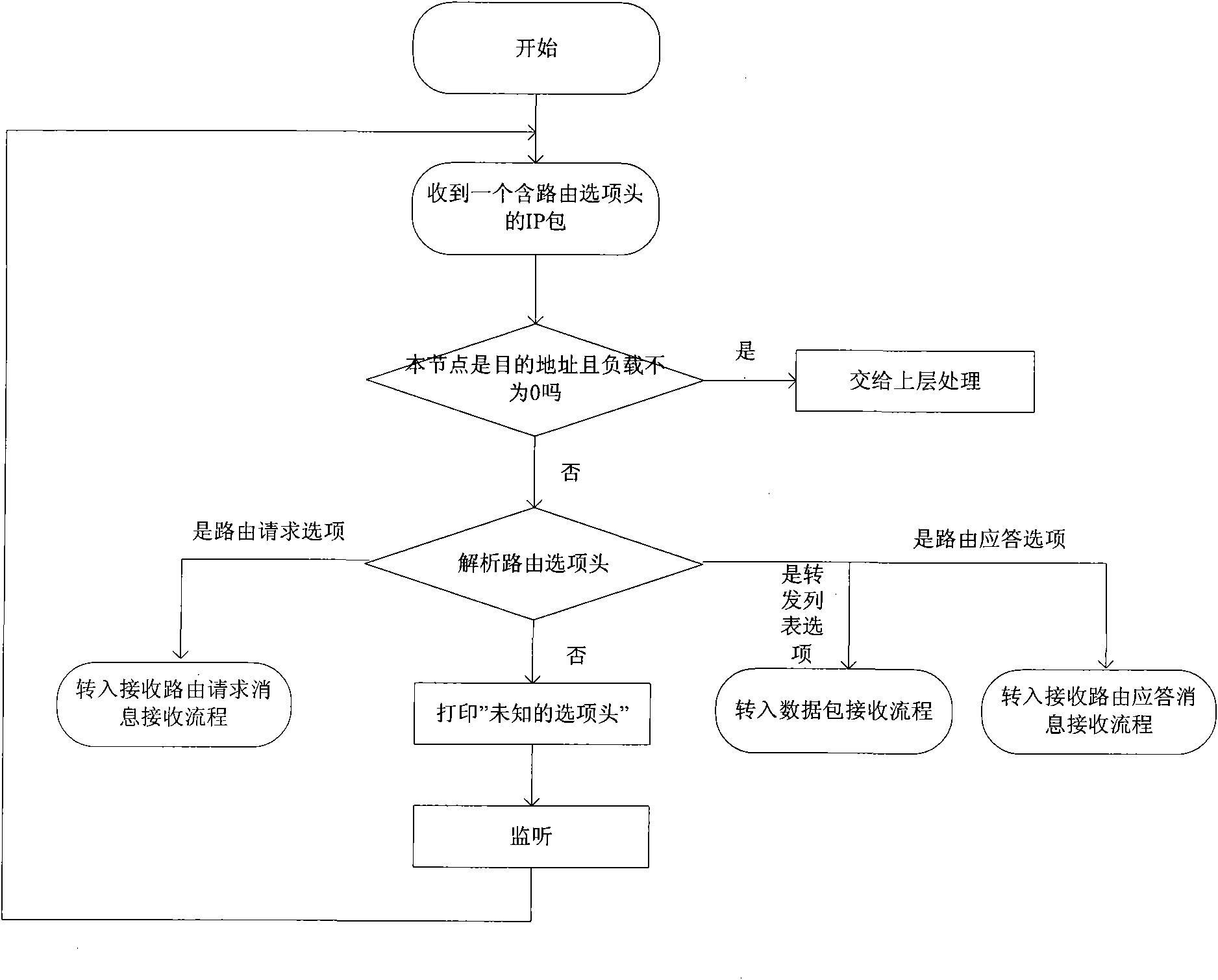Opportunistic routing algorithm of Ad hoc network based on node priority levels
A priority and node technology, applied in network topology, data exchange network, digital transmission system, etc., can solve problems such as upper layer service delay, wireless channel instability, MAC layer confirmation, retransmission, etc.
- Summary
- Abstract
- Description
- Claims
- Application Information
AI Technical Summary
Problems solved by technology
Method used
Image
Examples
Embodiment Construction
[0015] The present invention will be further described below in conjunction with examples, but the examples should not be construed as limiting the present invention.
[0016] The establishment of the forwarding list: When a node has data to send, it constructs a route request message RREQ. The RREQ mainly contains the source IP address, the destination IP address, and the RREQ ID. RREQ is transmitted in a flooding manner. The intermediate nodes passing by sequentially write their own IP addresses into the forwarding list field in RREQ. The intermediate nodes can forward messages with the same RREQ ID multiple times (set according to the network scale, in the present invention, In the network example, this value is set to 3), so that the sink node will receive multiple RREQs, and each time the sink node receives a RREQ, it will construct a corresponding routing response RREP message. The RREP message mainly contains the source IP address and the destination IP address. Forwarding ...
PUM
 Login to View More
Login to View More Abstract
Description
Claims
Application Information
 Login to View More
Login to View More - R&D
- Intellectual Property
- Life Sciences
- Materials
- Tech Scout
- Unparalleled Data Quality
- Higher Quality Content
- 60% Fewer Hallucinations
Browse by: Latest US Patents, China's latest patents, Technical Efficacy Thesaurus, Application Domain, Technology Topic, Popular Technical Reports.
© 2025 PatSnap. All rights reserved.Legal|Privacy policy|Modern Slavery Act Transparency Statement|Sitemap|About US| Contact US: help@patsnap.com



